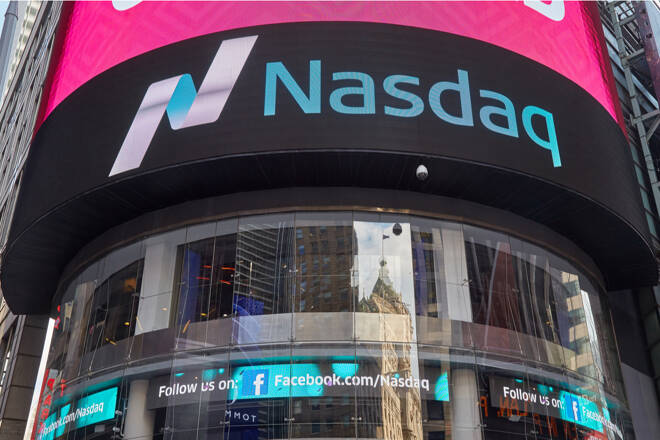Advertisement
Advertisement
Nasdaq 100, Dow Jones, S&P 500 News: Investor Eyes on Nvidia, Fed Minutes for Market Insight
By:
Key Points:
- Nvidia's Q4 earnings pivotal in assessing tech sector's current valuation.
- Tech sector's overvaluation triggers market realignment, impacting Nvidia.
- Nvidia's performance crucial for short-term market forecast amid tech slump.
Earnings and Market Momentum
Nvidia’s earnings are seen as a critical test for the ongoing momentum trade, which has been a significant driver of stock market highs. Wolfe Research highlights that while there are signs of weakening in this momentum, it’s premature to predict a major market reversal. The report’s outcome could significantly influence the market, potentially impacting both AI demand and broader tech sector fundamentals.
Tech Sector Overvaluation and Market Realignment
The tech sector’s overvaluation is becoming increasingly apparent, with recent sell-offs, including Nvidia, suggesting a market correction. This trend aligns with the “greater fool theory,” where overvalued assets rise based on continuous investor interest until it wanes. The recent actions in Nvidia’s stock indicate a possible onset of portfolio rebalancing among investors.
Corporate News and Sector Shifts
In other corporate news, Palo Alto Networks and SolarEdge Technologies reported significant losses, impacting their respective stock prices. Meanwhile, Bank of America reports a notable shift in market funds, with small-cap ETFs experiencing record inflows, indicating a potential reallocation in stock market investments. The communications services sector has seen significant buying activity, while health care and tech sectors witnessed the largest outflows.
Federal Reserve’s Stance and Economic Data
Investors are also keenly awaiting the Federal Reserve’s January meeting minutes for insights into future rate decisions. Recent economic data, showing higher-than-expected inflation rates, suggests persistent inflationary pressures, potentially influencing the Fed’s rate cut timeline and frequency.
Short-Term Market Forecast
Looking ahead, the tech sector’s performance, particularly Nvidia’s earnings, is likely to play a pivotal role in market direction. Despite the current market pullback and valuation concerns, the sector’s robust earnings growth supports a potentially resilient market performance. Nvidia, a key player in the AI-driven tech rally, could set the tone for market sentiment. If Nvidia’s earnings meet or exceed expectations, it could reinforce investor confidence in tech stocks, potentially stabilizing the market. However, any signs of weakness in Nvidia’s report could exacerbate the current downturn, especially in the tech sector. Investors should closely monitor Nvidia’s earnings and the Fed’s minutes for cues on market direction in the near term.
Technical Analysis
E-mini Nasdaq-100 Index futures are trading lower on Wednesday. The short-term trend is down. It turned down on Tuesday when sellers took out the February 13 bottom at 17542.00. This move put the intermediate trend indicator or 50-day moving average at 17211.97 on the radar.
The index has been trading above the 50-day MA since November 3, moving significantly above it in late December and again in mid-February. This move began to generate questions about its valuation. So I think it’s important that the index pulls back into the 50-day MA so that traders can properly determine if its overalued.
A successful test of the 50-day MA will mean that the upside pressure has been alleviated and the rally can resume. A failure at this level, however, will mean that further weakness is likely.
About the Author
James Hyerczykauthor
James Hyerczyk is a U.S. based seasoned technical analyst and educator with over 40 years of experience in market analysis and trading, specializing in chart patterns and price movement. He is the author of two books on technical analysis and has a background in both futures and stock markets.
Advertisement
